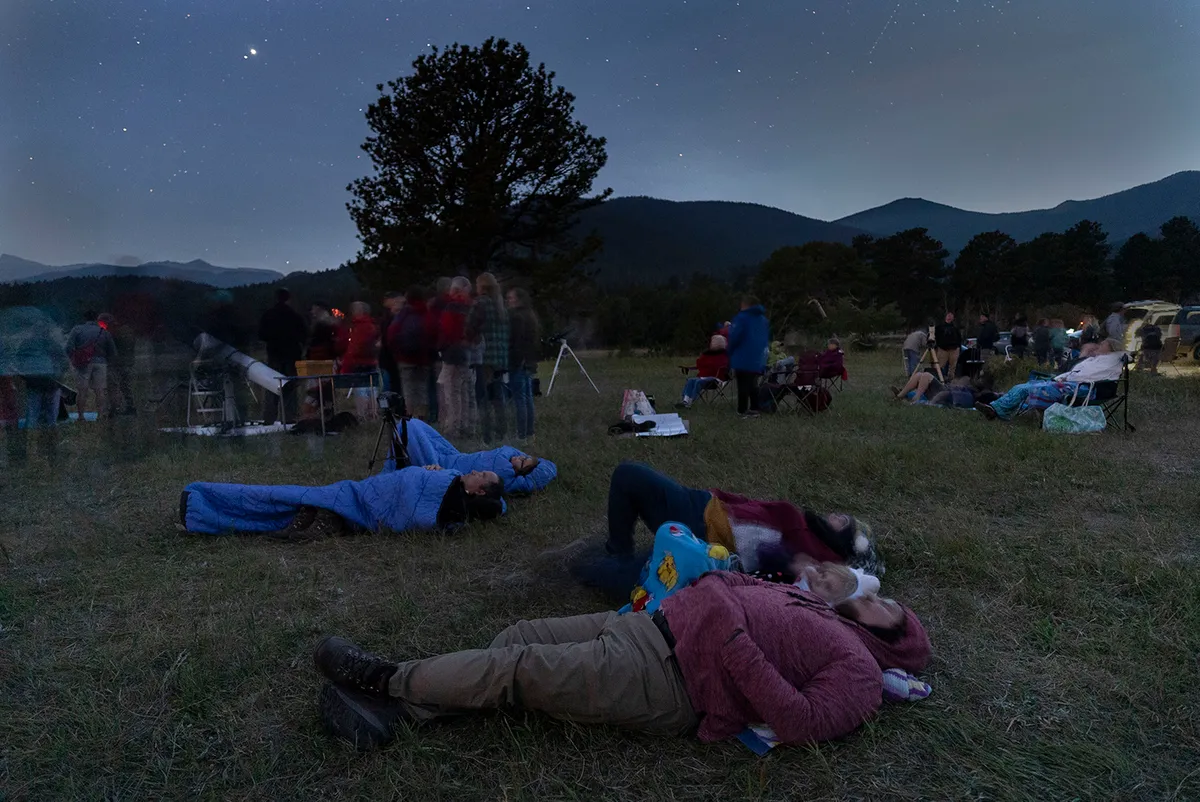The Perseid meteor shower is one of the best annual meteor showers of the year.
Like most meteor showers, the Perseids are caused by Earth moving through a stream of comet debris as our planet orbits the Sun.
The Perseids have a high rate of meteors, and the peak is around the nights of 11/12 and 12/13 August.
But in 2025 there'll be a big, bright Moon in the sky around the peak, which will wash out our view of the night sky.
So how can you make the most of the Perseid meteor shower 2025? Here are our top tips for beginners.
Want more detail? Discover an astronomer's top tips for seeing the Perseids.

Pick the best viewing window
The Perseids run from July 17–August 23, peaking overnight around 11/12 and 12/13 August.
But in 2025, the full Sturgeon Moon in the middle of August will severely wash out all but the brightest meteors.
So don't wait for the peak to do your Perseid watching. 18–28 July, especially around the 24 July new Moon, will give you darker skies and potentially a better chance of seeing a meteor.
Time it right, midnight to dawn
Meteors ramp up after midnight, with the sweet spot between after midnight and before sunrise, though some may be visible as early as 10 or 11 pm.
Get to a dark-sky site
Light pollution is your enemy when observing the Perseid meteor shower. Escape city lights: think countryside, parks, back gardens with minimal glow, or your nearest dark-sky site.
If you do observe from your back garden, be sure to turn off all your house lights! Perhaps you could get your neighbours involved, and surreptitiously convince them to turn off their lights too...
In short: the darker, the better.

Let your eyes adjust
Give your eyes time to adapt to the dark.
Ever noticed how, once you turn off the lights at night, you can't see anything, but after even a few minutes you begin to see more?
This is your vision adapting to the dark, and it's a vital tool for any kind of stargazing.
Sit in the dark for at least 20–30 minutes before staring skyward and you'll see more. And avoid bright lights or screens: they reset your night vision.
Aim for wide sky coverage
The Perseid meteors appear to originate from the constellation Perseus, which is where they get their name from.
But don't look directly at Perseus. Instead, look away from the constellation, about two thirds the way up the sky.
And you don’t need binoculars or a telescope, because they'll limit your view.
Lie back on a reclining chair or the ground and take it all in.
If you do spot a shooting star and can trace its direction backwards towards the constellation Perseus, then you've just seen a Perseid meteor.
You can use a stargazing app to help you find Perseus, but you should turn your phone or tablet's screen red to avoid it spoiling your night vision.

Minimise Moon interference
Avoid attempting to observe the Perseid meteor shower when the Moon is big and bright in the night sky.
Dates either side of peak activity could be a better option in 2025.
If moonlight is unavoidable, position yourself so an object (tree, car, building) blocks it.
Be patient and prepared
Meteor showers often come in bursts. Plan to watch for at least an hour, or longer if you can.
Bring snacks, water, warm clothes or blankets and something comfy to lie on.
It's a good idea to observe in groups with family and friends.
One person can sit with a meteor observing sheet (PDF), noting down the timings of each Perseid that's seen by the rest of the group.
You can then rotate roles to keep things interesting and give members of the meteor-watching group a break, as and when needed.

Know what to expect
Under ideal conditions (dark skies, radiant overhead, no Moon), you might see up to 100 meteors per hour, and this is known as the Zenithal Hourly Rate.
However, you should ignore anyone telling you that the Perseid meteor shower will 'light up the sky' and that you'll actually see 100 meteors an hour.
The Zenithal Hourly Rate is merely a representative figure used to compare different meteor showers with one another. In reality, you'll see fewer.
But being realistic about how many meteors you're likely to see is valuable preparation, as otherwise you may become quickly disappointed!
If you do manage to see or photograph a Perseid meteor in 2025, get in touch by emailing contactus@skyatnightmagazine.com.
